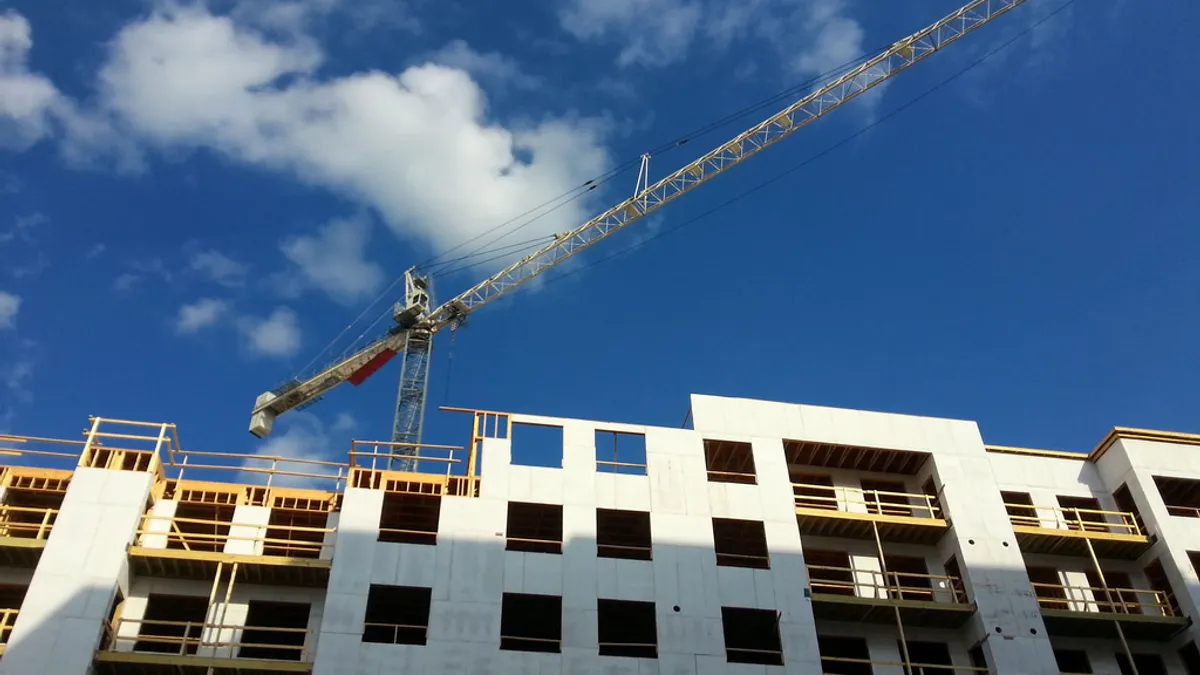Each Monday, we'll let you know what's coming in the week ahead, including important residential and commercial report releases, as well as our feature articles.
Infrastructure under Donald Trump feature article — Nov. 15
President-elect Donald Trump has proposed a $1 trillion infrastructure plan driven by private investment and massive tax credits. Although industry experts have questioned the funding sources and feasibility of his proposal, construction and engineering stocks soared following Trump's win.
The details of Trump's plan are still thin, so in our feature article on Tuesday, Nov. 15, we'll explore potential elements of the proposal and their impact, including public-private partnerships, the likelihood of being able to attract enough investors and the potential political fallout of handing revenue-generating, government-owned assets over to the private sector.
Housing Market Index — Nov. 16
The National Association of Home Builders will release the NAHB/Wells Fargo Housing Market Index on Wednesday, Nov. 16. Last month, the NAHB reported the HMI dipped two points in October to a score of 63. Despite the drop, the HMI was at its second-highest level of 2016 in October.
NAHB Chairman Ed Brady attributed last month's slight decline in the HMI to lot and labor shortages but noted that builders are generally optimistic about market conditions.
Will builder confidence rise this month, or will economic uncertainty contribute to another dip?
Construction material prices — Nov. 16
The monthly Producer Price Index report from the Bureau of Labor Statistics will be released Wednesday, Nov. 16. That afternoon, the Associated Builders and Contractors will offer its take on the data, and we'll cover both reports in a combined story.
Last month, the BLS reported that material prices rose 0.3% between August and September. September marked the first month since November 2014 that nonresidential construction input prices were up on a year-over-year basis, as they were 0.1% higher than September 2015.
ABC Chief Economist Anirban Basu said the month-to-month and year-over-year rise in prices was due to stabilized energy prices and what he considered wage inflation in the U.S. With the higher material costs, contractor profit margins are tightening, according to Basu. Will prices rise again in Thursday's report, or will they offer construction firms some relief?
AIA billings — Nov. 16
The American Institute of Architects will release its Architectural Billings Index on Wednesday, Nov. 16. Last month, the AIA reported the index fell to 48.4 in September, down from August's score of 49.7. September marked the first time since mid-2012 that the ABI saw two consecutive months of declines in demand for services.
In last month's report, AIA Chief Economist Kermit Baker said the consecutive months of declines should "act as a warning signal" for the industry. However, he added that uncertainty surrounding the U.S. presidential election, which led some developers to stall projects, should begin to ease.
The ABI is a significant report for the commercial construction industry, as it serves as an indicator of future construction spending — with a lead time of about nine to 12 months. Will Wednesday's results show design services bouncing back, or is the industry in store for a streak of declines?
Housing starts — Nov. 17
The Commerce Department will release housing starts data for October on Thursday, Nov. 17. Last month, the department reported housing starts fell 9% in September to a seasonally adjusted annual rate of 1.047 million. Multifamily construction plummeted 38.9%, while single-family rose 8.1%.
September's starts figure was the lowest since March 2015, as the housing market has struggled to maintain a consistent pace of recovery. However, building permits — which are an indicator of future construction activity — rose 6.3% between August and September.
Will Tuesday's report show that housing starts rebounded in October, or will they continue to slide?
Passive House standard in commercial buildings feature article — Nov. 17
The Passive House energy efficiency standard has delivered impressive savings to owners, and it's now creeping into the commercial sector. In June, Cornell Tech announced that its New York City Roosevelt Island campus would soon be home to the world's tallest Passive House-certified building. In our feature article on Thursday, Nov. 17, we'll explore the viability of this highly controlled system in the the difficult-to-control environments of nonresidential buildings.












